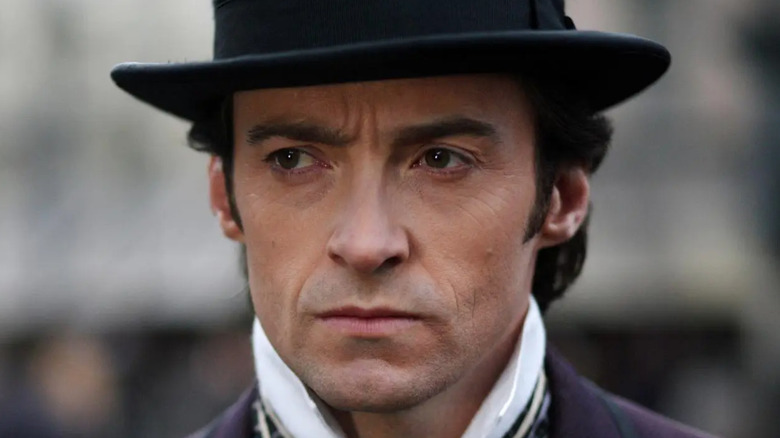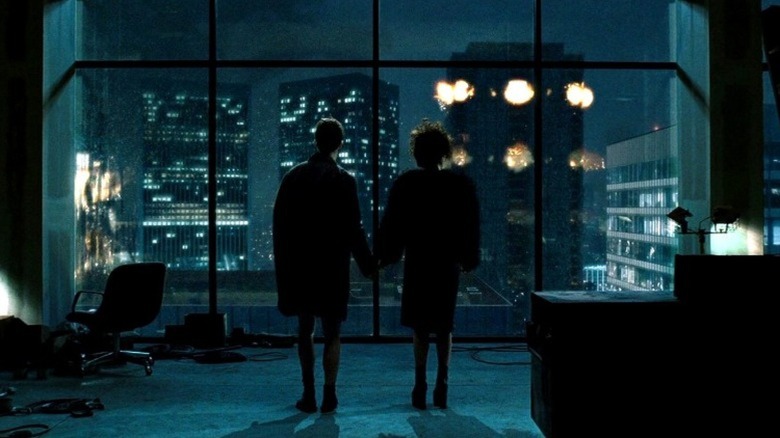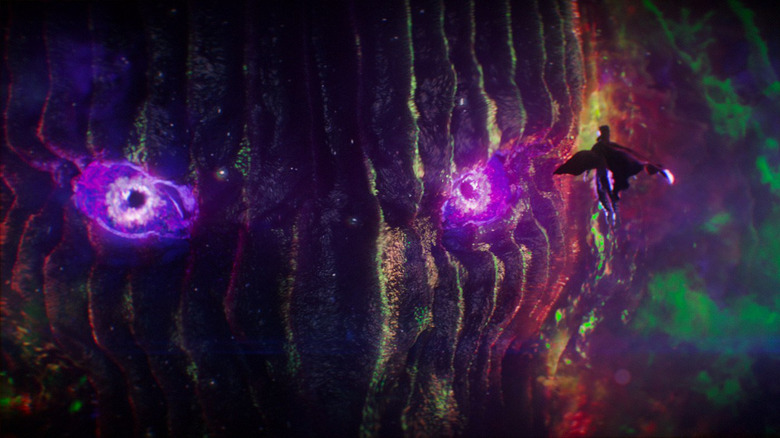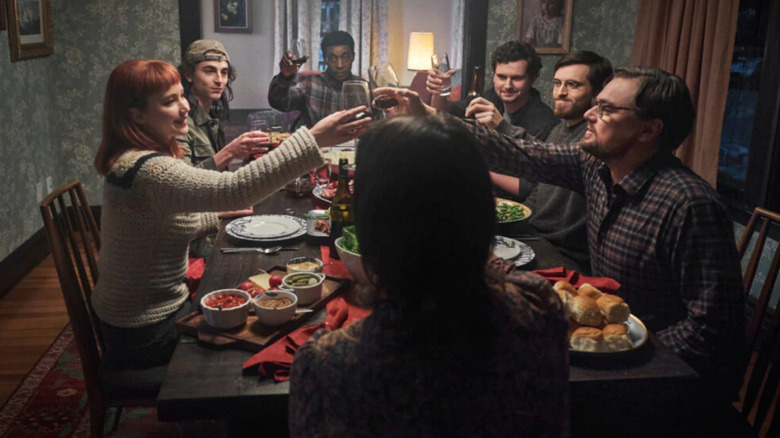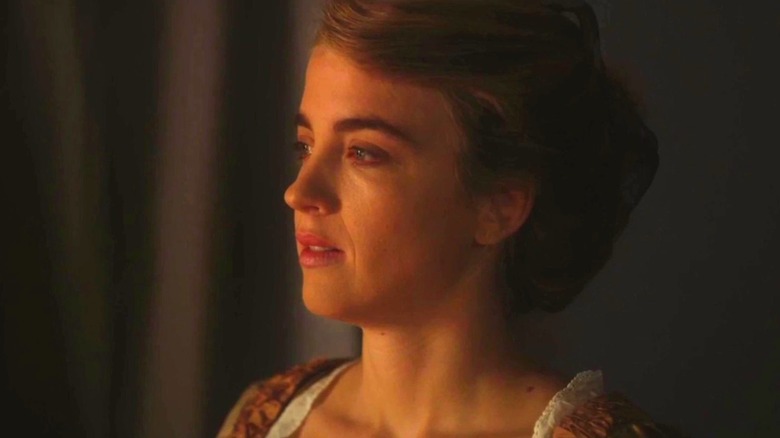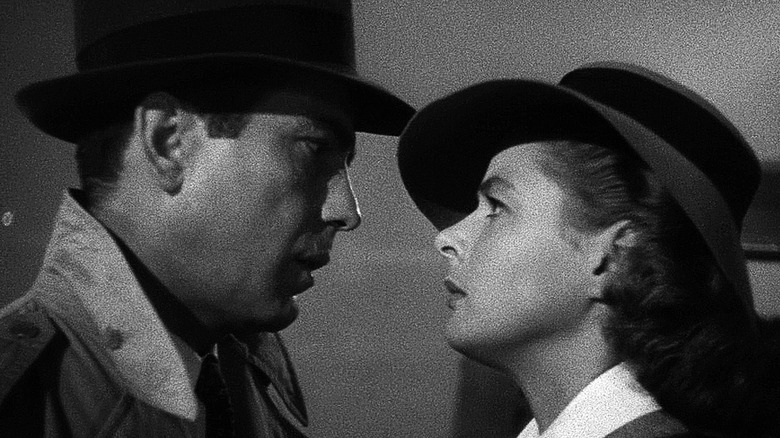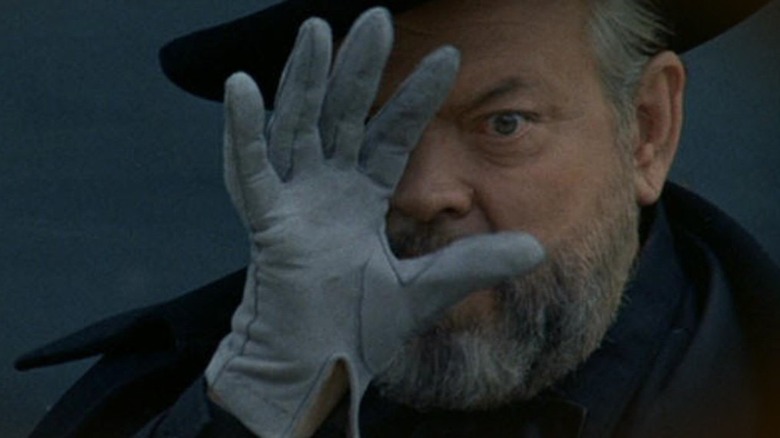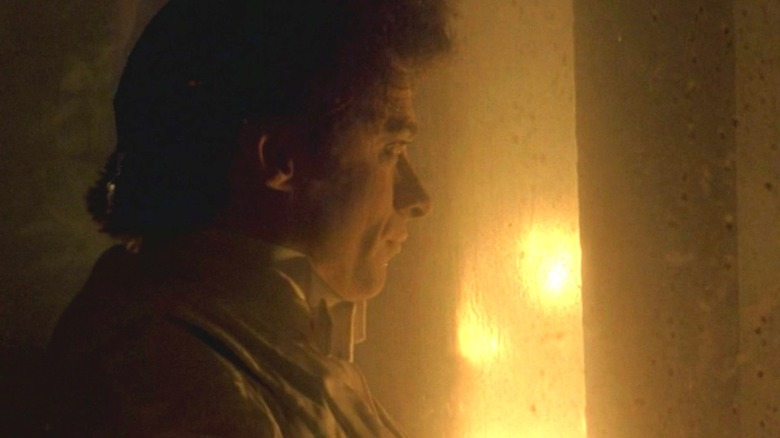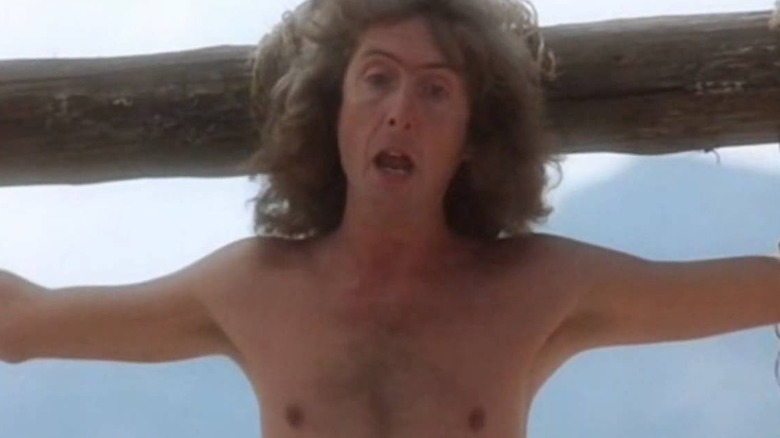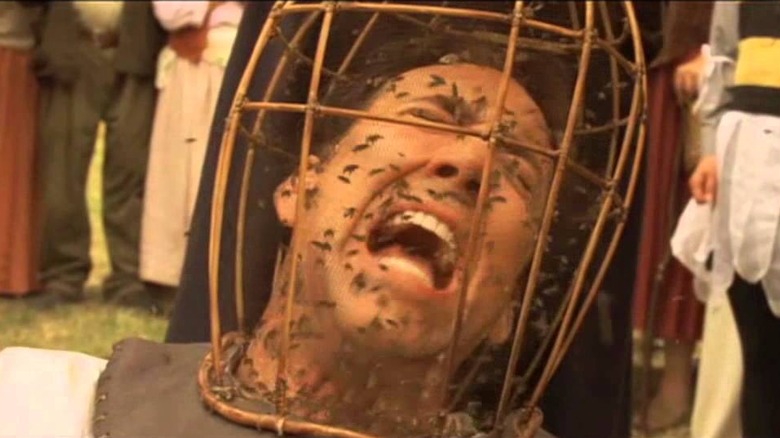Movies That Save The Best For Last
An ending can make or break a movie. An otherwise entertaining film that ends on a false note can leave the audience wondering whether the whole experience was worth their time. On the other hand, a great ending can elevate a good movie to a great one, an okay movie to a good one, or even add some redeeming value to what would otherwise have been a disaster.
We're here to celebrate those endings that force you to reevaluate a movie in a positive light. Whether they're the result of clever twists, powerful emotional catharsis, or unexpected changes from formula, these endings are the best scenes of their respective films. The quality of these movies varies greatly, ranging from all-time classics to laughable duds, but the common thread between them is that they all save the best for last and send audiences home on a high note.
This article contains spoilers for all of the movies discussed..
Fight Club's ending reframes everything
"Fight Club," David Fincher's 1999 adaptation of the 1996 novel by Chuck Palahniuk, is one of those movies where the big twist ending forces the viewer to reassess everything they've just watched. The reveal that Tyler Durden is the Narrator's alternate personality might raise some confusion about specific plot mechanics, but it immediately puts the story's thematic concerns into focus. Tyler is the unhealthy projection of the Narrator's own rage, self-loathing, and toxic masculinity, an internal antagonist who needs to be defeated.
The climactic twist comes straight from the book, but the movie offers its own spin on the ultimate resolution. Though the Narrator kills Tyler, Project Mayhem nonetheless succeeds in its terrorist plot. In the darkly hilarious finale, the Narrator tells Marla, "You met me at a very strange time in my life" as buildings explode around them, and one last subliminal penis shot flashes as The Pixies' "Where Is My Mind" leads into the credits. This ending was censored in China, though ironically the censored version is closer to Palahniuk's novel.
Doctor Strange broke the MCU climax mold
In many ways, "Doctor Strange" is one of the more formulaic Marvel origin stories, with Stephen Strange's character arc having a lot in common with that of Tony Stark's in the first "Iron Man" movie. What a relief it is, then, when the climax of "Doctor Strange" breaks significantly from the standard Marvel Cinematic Universe formula. Whereas most MCU entries build up to giant fight scenes between the heroes and villains, Scott Derrickson's 2016 film finds a more clever, less combative method for the Sorcerer Supreme to save Earth from the cosmic terror of Dormammu.
Strange's strategy initially appears to be an attempt at diplomacy — he announces his intention to "bargain" with Dormammu, at which point the Dark Dimension ruler promptly kills him. It soon becomes clear, however, that Strange's true strategy isn't one of diplomacy but one of annoyance: He's trapped both himself and Dormammu in a time loop where Strange keeps coming back to be killed again and again and again. Eventually, Dormammu gets so sick of the loop that he agrees to Strange's terms to leave Earth alone. More superhero movies could benefit from the kind of inventive use of superpowers displayed in this unique "battle."
Don't Look Up finds power in the apocalypse
Adam McKay's "Don't Look Up" was one of the most divisive films of 2021. It was one of Netflix's most watched movies ever and was nominated for many awards, including the Oscar for Best Picture, but reviews were extremely mixed. Even those who generally disliked the apocalyptic satire, however, have acknowledged that the film is at its best when it finds genuine pathos in the characters' final night on Earth.
With the ultra-rich escaping to outer space and the comet about to cause human extinction, Dr. Randall Mindy decides to spend one last dinner together with friends and family. Yule, the Christian anarchist skater played by Timothée Chalamet, leads the group in prayer before dinner, and everyone expresses the things they're grateful for even as the world is literally ending around them. If the rest of the movie was as well-executed as its ending, it might have been a lot better reviewed. Two credits scenes, which are among the film's most bleakly humorous, are icing on the cake.
Monsters University has an unexpected message
Many of Pixar's movies, from "Toy Story 3" to "Coco" to "Turning Red," save their most emotional moments for the end. The ending of "Monsters University," the 2013 prequel to "Monsters Inc.," stands out for elevating what's otherwise a cute but unexceptional parody of college movies into something that lives up to Pixar's general high standard of quality.
There are many family movies about following your dreams, but "Monsters University" is one of the few to acknowledge that dreams can fail and change. No matter how hard he tries, Mike Wazowski realizes he's never going to be scary. That's okay, because he finds there are other things he's good at, specifically working as a scare assistant. Both Mike and Sully end up expelled for all the trouble they cause, but they find they don't need to follow the set path of academia to succeed — they apply for jobs in the mailroom at Monsters Inc. and the credits sequence shows them gradually working their way up the corporate ladder. It's an unusual but positive message of flexibility.
Portrait of a Lady on Fire is an all-time tearjerker
Writer-director Céline Sciamma is talented at many things, but her greatest talent might be coming up with the perfect endings for her movies. "Portrait of a Lady on Fire," her 2019 historical lesbian romance, is a slow burn with a powerful conclusion. Romantic tensions gradually build up between the painter Marianne and her aristocratic subject Héloïse, but their affair is brief, and Marianne only sees Héloïse twice once it's over. The first time is at an art exhibit; the second time is at the orchestra, and it's this ending which turns the film into one of the all-time great tearjerkers.
"Portrait of a Lady on Fire" uses music extremely sparingly — only in scenes where the characters are actually performing or singing. As a result, when music is heard in the film, its effect is extremely powerful. The orchestra in the final scene is playing the Presto from "Summer" in Vivaldi's "Four Seasons," the same piece of music Marianne once played for Héloïse. Héloïse doesn't know Marianne is observing her in the audience for this concert, but when she hears this music, she appears overwhelmed with the memories of their love. It's an incredible piece of filmmaking on Sciamma's part, supported by great acting by Adèle Haenel.
The Wind Rises is Miyazaki's mic-drop
Before Hayao Miyazaki came out of retirement, 2013's "The Wind Rises" was set to be the master animator's final feature film. An unusually realistic and adult-oriented anime compared to his other works, "The Wind Rises" is a fictionalized biopic of Jiro Horikoshi, the engineer who designed the Zero fighter planes used by Japan in World War II. As you might expect, this story doesn't have a happy ending, and the final scene of the movie would have been an incredible final statement by Miyazaki.
"The Wind Rises" ends with Jiro dreaming of himself in the land of the dead alongside the ruins of his planes, destroyed in suicide bombings, and the ghosts of his engineering hero Caproni and his deceased wife Nahoko. It's the existential nightmare of acknowledging one's life's work has been used for evil. According to the documentary "The Kingdom of Dreams and Madness," the film's ending was almost even darker, with Jiro actually dead and unable to go to heaven. Even in its softened-down state, however, the struggle of having to keep living with one's sins is unusually heavy stuff for a filmmaker best known for family-friendly fantasies.
Casablanca is a classic with the perfect conclusion
Michael Curtiz's 1942 drama "Casablanca" is a movie so beloved as a classic that basically every line has become a cliché — and yet, it's still a delight to watch 80 years later. From beginning to end, "Casablanca" is a brilliantly entertaining movie, with clever writing and captivating romantic chemistry between Humphrey Bogart as Rick Blane and Ingrid Bergman as Ilsa Lund. It's the story's conclusion, however, that truly seals this as one of the best American films ever made.
Rick, a character who was once a celebrated freedom fighter but has since become cynical and disillusioned, regains his heroism at a time when the world truly needs it. He sacrifices what he wants (to stay with Ilsa) in order to do what he needs (to help her and her husband escape from the Nazis). "Casablanca" is a work of wartime propaganda made with such moral heft and great storytelling that it elevates itself to become a powerful work of art.
F for Fake builds a genius deception
At the start of 1973's "F for Fake," filmmaker Orson Welles assures the audience, "During the next hour, everything you hear from us is really true and based on solid facts." He spends the next hour talking about various real life hoaxes, from art forgeries to the fictional news broadcasts in his own 1938 "War of the Worlds" radio drama. But "F for Fake" runs longer than an hour, and in its final 28 minutes, it becomes one of the very "fakes" the first hour was documenting.
Welles is honest about his fakery, of course. All his assurances of truth at the beginning were clearly stated to last just one hour, and at the end of the film, he openly admits to "lying my head off" during the 17-minute story about his partner and co-writer Oja Kodar modeling for and swindling Picasso. In an era of "fake news," Welles' trolling deconstruction of the documentary format is more relevant than ever.
The Prestige reveals its mind-blowing twists
Christopher Nolan's 2006 film "The Prestige," starring Christian Bale and Hugh Jackman as rival magicians, concludes with several mind-blowing twists. Each of the magicians is hiding secrets. For Jackman's Robert Angier, the secret is that he's able to pull of the "Transported Man" magic trick through actual magic of sorts, cloning himself with a machine built by Nikola Tesla. Bale's Alfred Borden performs the trick using a very different secret: He's not actually one person, but twin brothers sharing a single identity.
One Borden is hanged after being framed for killing Angier, who's secretly still alive under the identity of Lord Caldlow. The other Borden gets his revenge and kills the last remaining Angier, whose theater burns down with all his dead clones inside. Great twist endings are hard to pull off, but "The Prestige" is a movie designed around its many twists, meticulously following the steps that make a great magic trick work.
The Florida Project's ending elevates the movie
In contrast to the nonstop narrative propulsion of his 2015 breakout hit "Tangerine," Sean Baker's 2017 feature "The Florida Project" is a much slower-paced, episodic story. Set in a motel outside of Disney World, the film centers around Moonee, a six-year-old girl having fun with her friends while her loving but neglectful single mother, Halley, struggles to make ends meet. It's a movie that's repetitive by design to best get across the reality of life in poverty, but the ending shakes up this repetition in ways both heartbreaking and absolutely stunning.
Eventually, things get bad enough that child services comes to take Moonee away from Halley. In this moment of deep pain, Moonee and her friend Jancey escape and run away to the Magic Kingdom. People can debate whether the Disney World scene, which was shot in secret, is meant to be real or the children's fantasy, but however you interpret it, the conclusion makes the film as a whole far more memorable than it would have been without it.
Night of the Living Dead's scariest moment
George Romero's "Night of the Living Dead" shocked moviegoers in 1968 with its groundbreaking gore and fresh take on the zombie mythos. For all the terror of its flesh-eating undead, though, the ending of the film shows how ordinary humans can be the scariest monsters of all. Ben, the movie's strong Black hero, has done his best to survive throughout the film, but in the end, he's killed by some white men with guns who mistake him for a zombie.
Romero didn't intentionally write "Night of the Living Dead" with race in mind, but regardless of what the filmmaker initially intended, the ending has widely been viewed as subversive commentary on racism. Its implications are, unfortunately, no less scary today than they were when the movie was first released. You can credit "Night of the Living Dead," and particularly its ending, as helping lead the way for such racially-conscious horror films as "Candyman" and "Get Out."
Life of Brian looks on the bright side of life
You can debate which "Monty Python" movie is the funniest, but "Monty Python's Life of Brian" is definitely the one with the strongest story, which leads to the strongest ending. This irreverent, oft-censored 1979 comedy follows Brian, a "very naughty boy" living in proximity to Jesus who is accidentally mistaken for the Messiah. At the end of the film, Brian has been sentenced to death by crucifixion, and all attempts to save him go horribly awry.
Unable to do anything to escape his slow and painful death, other crucified men cheer Brian up by singing "Always Look on the Bright Side of Life." Optimistic, nihilistic, absurdist, extremely British — there are lots of ways one can describe the comedic juxtaposition of Eric Idle's silly, upbeat song with the direness of its context. Whatever you want to call it, it struck a chord. In 2014, "Always Look on the Bright Side of Life" became the most frequently requested funeral song in the United Kingdom.
The Wicker Man becomes a meme
Neil LaBute's 2006 remake of "The Wicker Man," starring Nicolas Cage as police officer Edward Malus, is not considered a good horror movie by most people's standards. In the final moments of its unrated cut, however, it becomes an incredibly memorable one. Though there are several amusing bits of overacting from Cage throughout the film, none compare to the scene where the villagers torture him with bees, resulting in the now-legendary line reading, "Not the bees! Not the bees!"
In a 2022 interview with IndieWire, Cage claimed the comedy of this scene was actually intentional, and that he and LaBute actually wanted the film to go further with the ridiculousness. "It probably would've been more clear how funny it was if [producer] Avi Lerner let me have the handlebar mustache that I wanted to wear and be burned in the bear suit," said Cage. "That would've been so horrifying, but they didn't go for that because all the comedy would've emerged from this horror." He pointed to the horrifying yet also darkly comedic conclusion of "Midsommar" as a more successful example of what "The Wicker Man" remake was aiming for. It did, however, achieve internet immortality.
